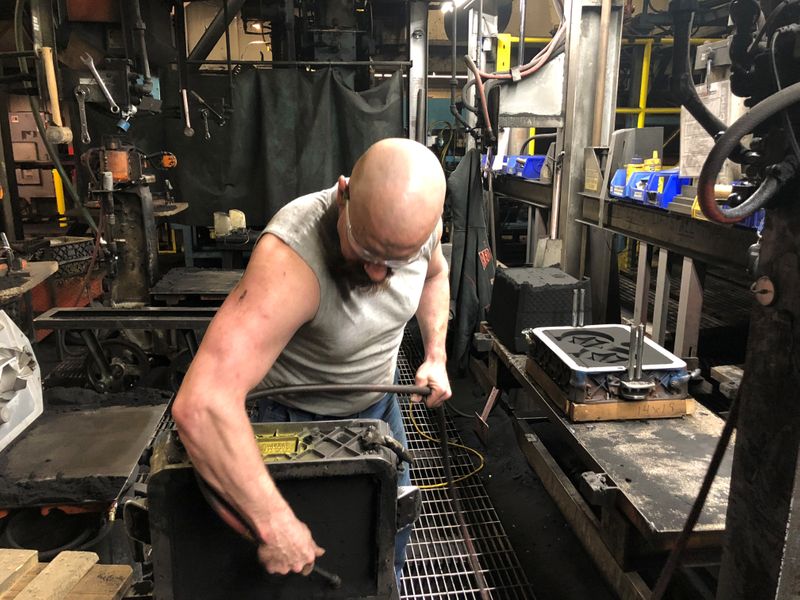WASHINGTON (Reuters) - Output at U.S. factories increased more than expected in January even as a shortage of semiconductors weighed on the production of motor vehicles, pointing to resilience in the manufacturing sector recovery.
Manufacturing production rose 1.0% last month after gaining 0.9% in December, the Federal Reserve said on Wednesday. That was the ninth straight monthly advance in factory production.
Economists polled by Reuters had forecast manufacturing output increasing 0.7% in January. Manufacturing, which accounts for 11.9% of the U.S. economy, has powered ahead as the pandemic left Americans grounded at home, shifting demand to household goods from services like airline travel and hotel accommodation.
Manufacturing momentum could slow in the spring as the distribution of vaccines reaches large swathes of the population, helping to slow the spread of the virus. That could unleash pent-up demand for travel.
Still, production at factories will be supported by low customer inventories, as well as lean stocks at manufacturers. A survey this month showed a dip in manufacturing sentiment in January.
The Fed report showed motor vehicles and parts output declined 0.7% in January. Production at auto plants has been hampered by a shortage of semiconductors. Motor vehicle production slipped 0.2% in December. Excluding autos, manufacturing output increased 1.0%.
The strength in manufacturing output combined with 2.3% jump in mining to lift industrial production by 0.9% in January. That followed a 1.3% surge in December. Industrial production remains below its pre-pandemic level. Utilities output fell 1.2%.
Capacity utilization for the manufacturing sector, a measure of how fully firms are using their resources, rose 0.7 percentage point to 74.6% in January. Overall capacity use for the industrial sector increased 0.7 percentage points to 75.6%. It is 4.0 percentage points below its 1972-2019 average.

Officials at the Fed tend to look at capacity use measures for signals of how much "slack" remains in the economy — how far growth has room to run before it becomes inflationary.
